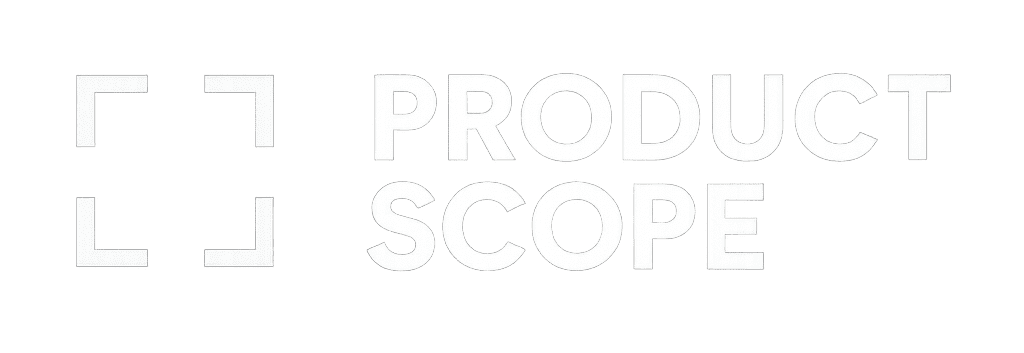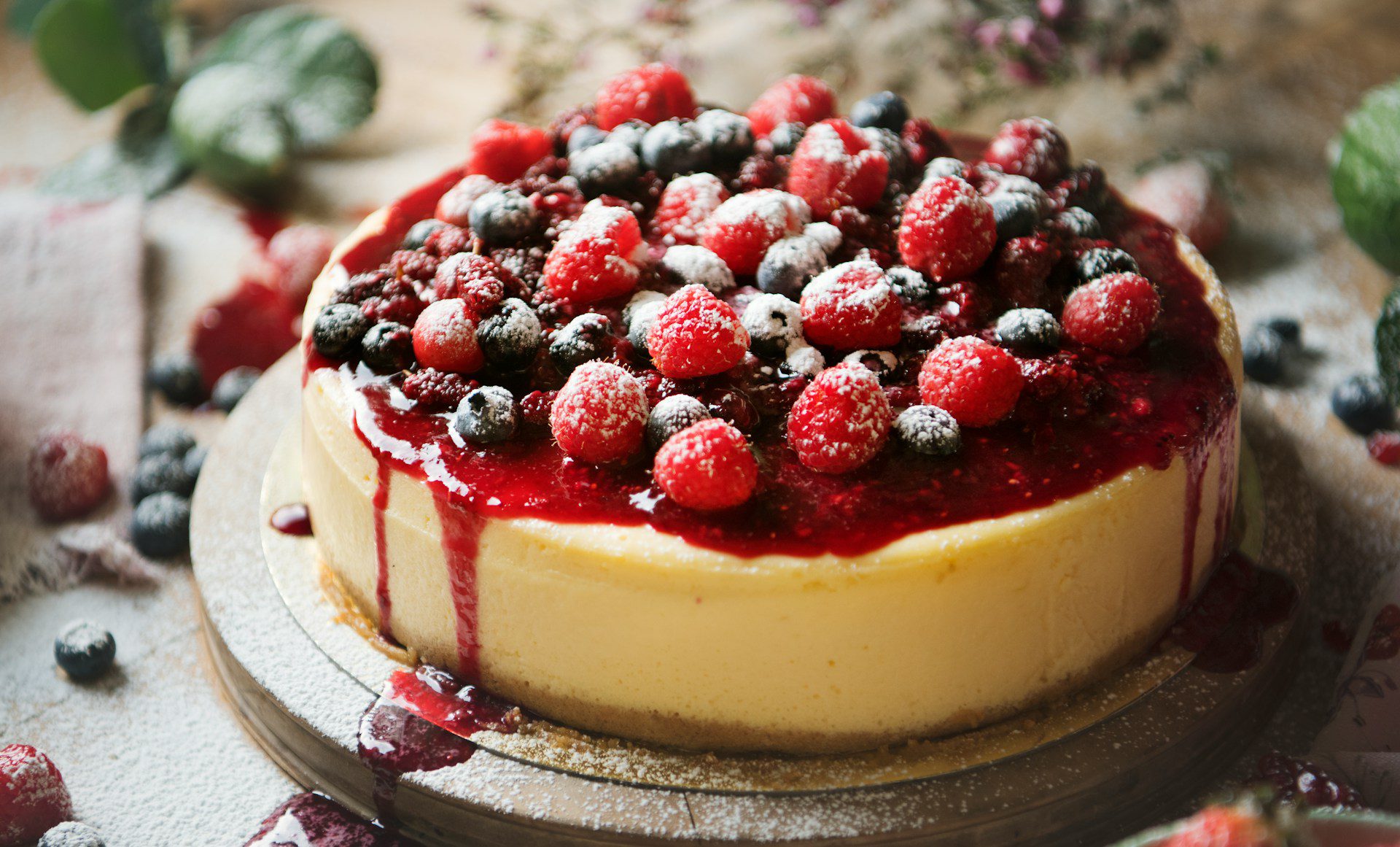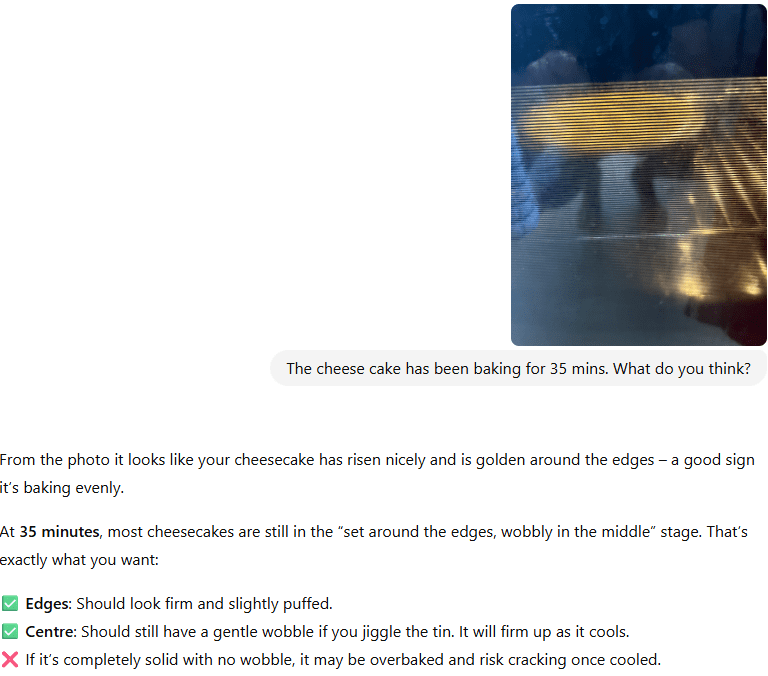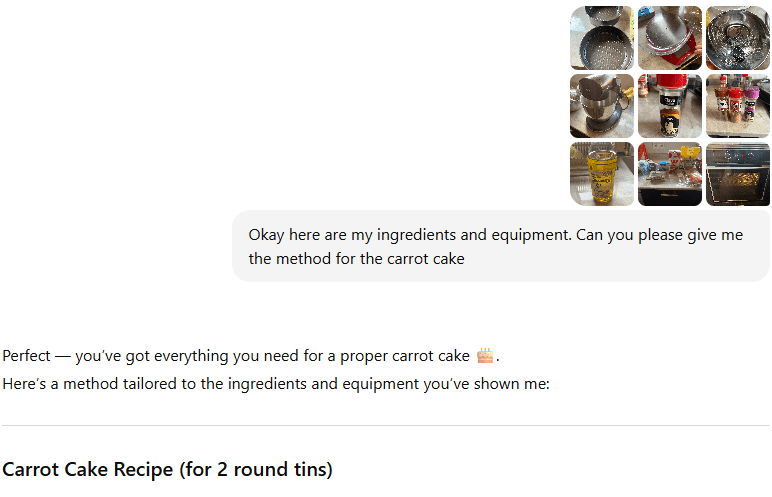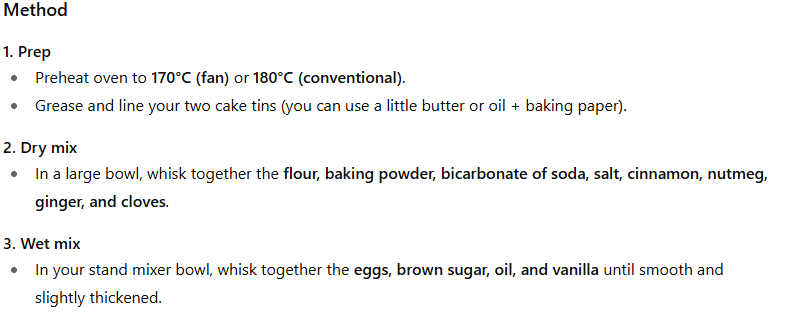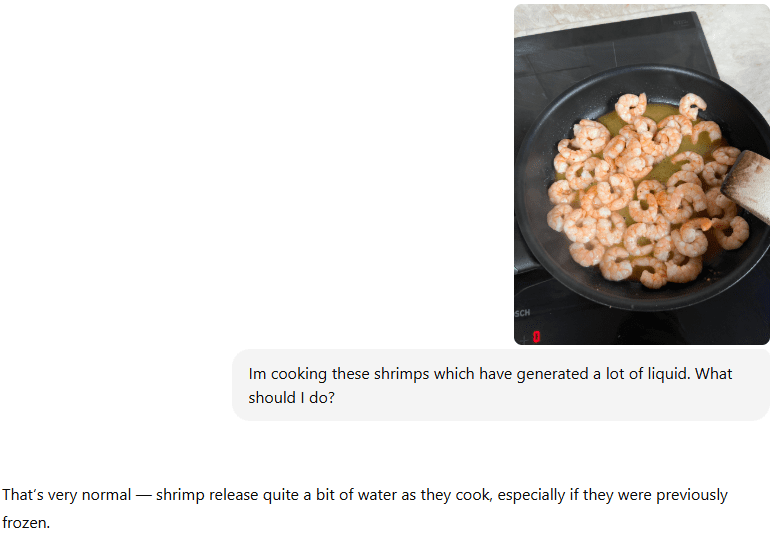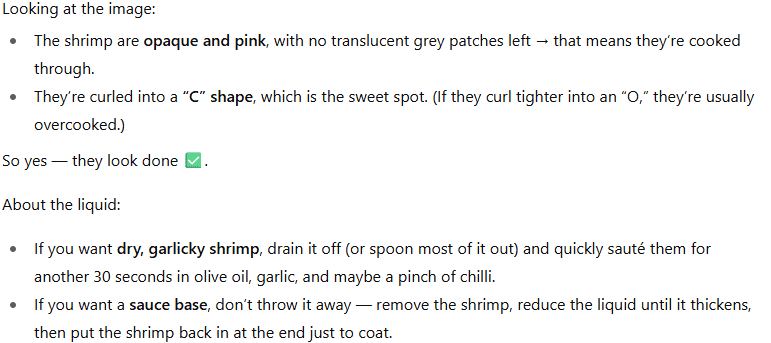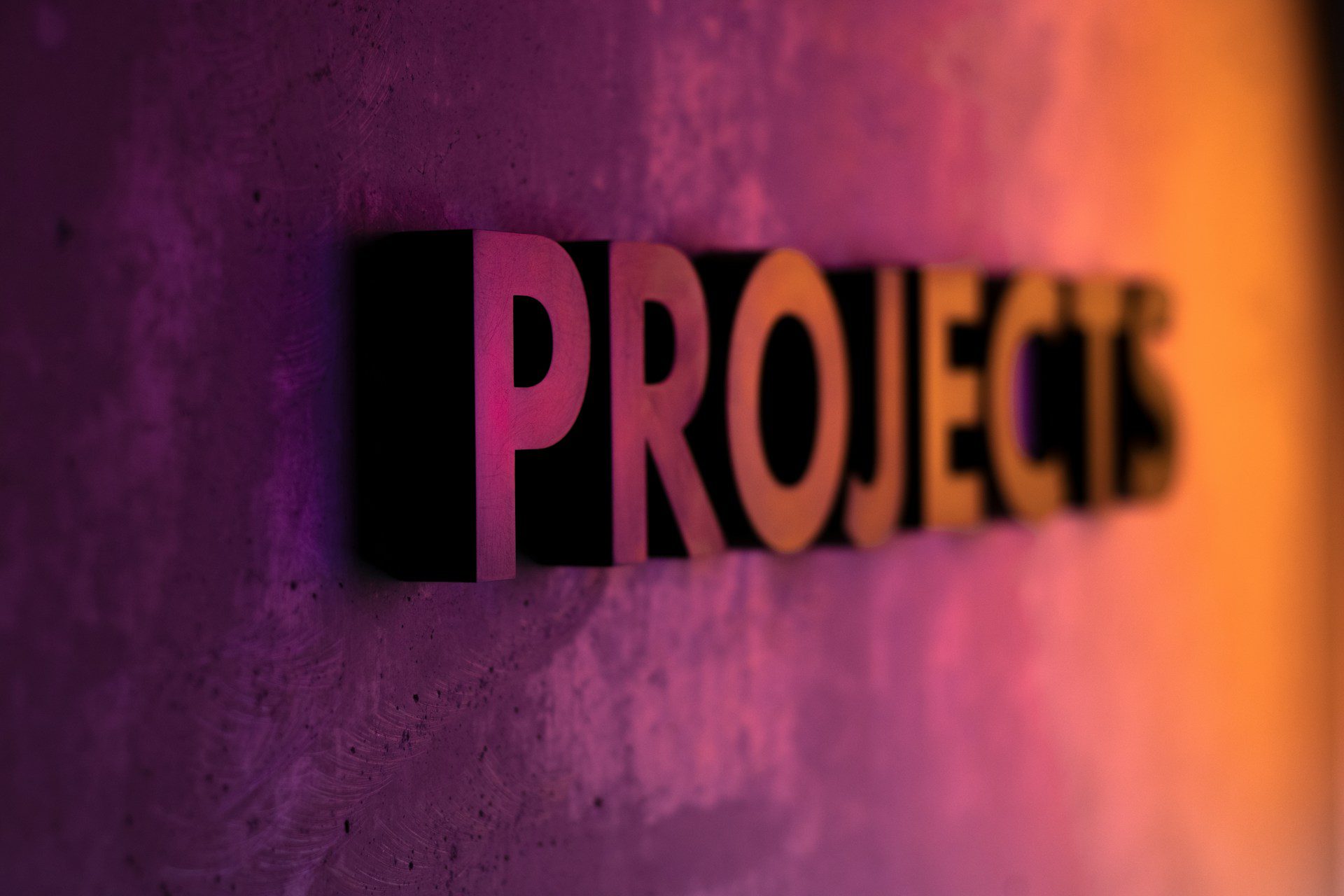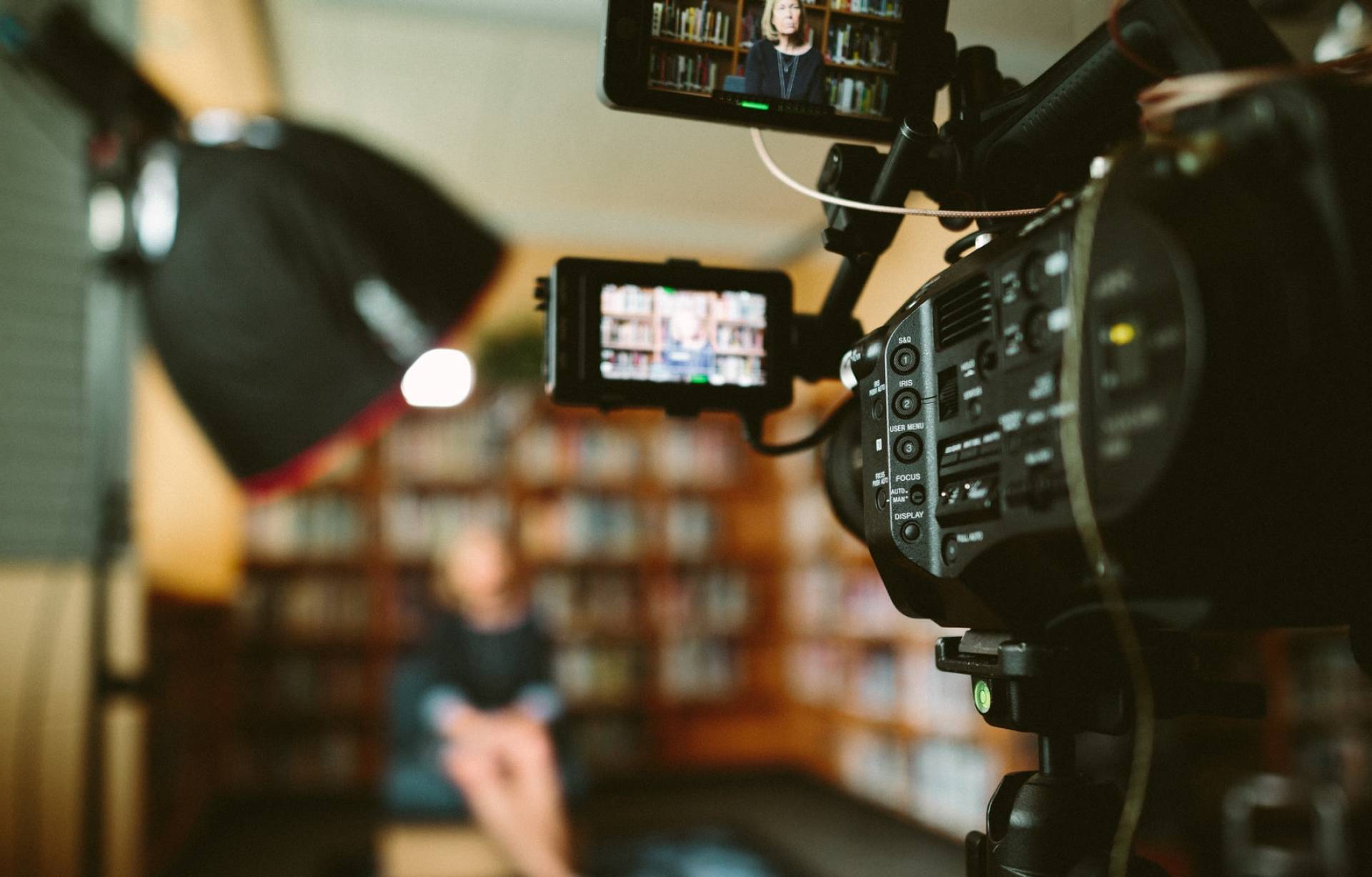AI Photo Prompting: How AI Assists My Cooking with Photos
AI Photo Prompting: How AI Assists My Cooking with Photos
This is the fourth post in my AI Photo Prompting series, where I share how taking photos and asking ChatGPT to analyse them often works better than writing detailed text prompts. After using photo prompting to reduce my electricity bill, buy a car with confidence, and for quick translations, I wanted to test it on something completely different: cooking.
I’m a competent but not exceptional cook – comfortable with Jamie Oliver and Delia Smith recipes, but often frustrated by ingredient substitutions, equipment differences, and those moments when something goes wrong mid-cooking. Photo prompting with ChatGPT (which excels at visual analysis) transformed cooking from following rigid instructions to having an expert assistant who could see exactly what I was working with.
My approach remained consistent: photograph ingredients, equipment, and cooking progress, then discuss with ChatGPT rather than trying to describe complex situations. The results completely changed how I approach cooking.
This all started because we don’t like the cakes in Spain. I’ve said it now and we can move on. For my son’s birthday, he wanted a cheesecake, and our accommodation had a mixer and baking tools, so I decided to attempt it.
I started with a simple request: “I want a cheesecake recipe only using ingredients I can find in Lidl Spain.” ChatGPT provided a recipe, which I tweaked slightly based on our preferences.
When I got to Lidl, I couldn’t find some of the specified ingredients. Rather than abandoning the plan, I photographed the dairy shelves and asked ChatGPT what I could substitute. It identified Queso Fresco as a suitable replacement and instantly rewrote the recipe to accommodate the change.
Back in the kitchen, I photographed all my equipment – mixer make and model, oven, ingredients, everything I had available. ChatGPT provided personalised method instructions tailored to my exact setup, giving me confidence to proceed.
The real breakthrough came during the actual baking process. At one point, the butter began to curdle when I added eggs that were too cold – a classic baking disaster. I quickly photographed the mixture and uploaded it to ChatGPT, explaining what had happened.
ChatGPT immediately diagnosed the problem and walked me through recovering the mixture. No need to start over or guess at solutions – just visual evidence and expert guidance.
During baking, I took photos to check on progress and get timing advice. Throughout the entire process, I felt like I had a professional baker standing beside me, able to see exactly what I was seeing and provide specific, contextual advice.
The result? The best cheesecake I’ve ever made. But more importantly, I’d discovered a completely new way to cook.
Encouraged by the cheesecake success, I applied the same approach to other baking projects. For a lemon cake and carrot cake, I followed the same process: photograph ingredients at the store when substitutions were needed, document my equipment for personalised instructions, and use real-time photo assistance throughout cooking.
Each cake turned out better than anything I’d previously achieved. I reduced sugar content through discussions with ChatGPT, adapted techniques for my specific equipment, and solved problems as they arose through visual evidence rather than guesswork.
The methodology expanded to dinner cooking as well. When I wanted to make Chinese-style chicken, I lined up all my available sauces and ingredients on the counter, photographed everything, and asked for recipe options. ChatGPT provided 3-4 different approaches, we discussed the options, and I cooked with confidence.
The most dramatic example came when cooking shrimp, which I consistently overcook. Following my usual approach, I photographed the shrimp in the pan mid-cooking and asked for guidance.
ChatGPT told me to stop immediately and drain the sauce – normally I’d cook until all liquid had evaporated, which was ruining the shrimp. Following the visual advice delivered the best shrimp I’ve ever cooked: juicy and succulent instead of tough and rubbery.
This moment crystallised the value of photo prompting for cooking: instead of following generic timing instructions, I had expert eyes evaluating my specific ingredients in real-time.
Through experimentation, I identified two effective strategies:
1. Shop-First Approach: Photograph ingredients at the store and ask ChatGPT to work with what’s actually available. This eliminates the frustration of recipes calling for ingredients you can’t find.
2. Inventory-Led Cooking: Photograph what you have at home and ask for recipe suggestions. This reduces food waste and often leads to more creative dishes.
Both approaches provide personalised recipes and cooking instructions tailored to your exact situation, equipment, and ingredients. No more generic instructions that don’t match your kitchen setup.
What photo prompting really delivered was cooking confidence. Instead of being constrained by exact recipe requirements, I could adapt in real-time based on what I had available. Ingredient substitutions became opportunities rather than problems. Equipment limitations were accommodated rather than avoided.
The speed and accuracy of visual feedback eliminated the guesswork that had made cooking stressful. Whether checking progress, troubleshooting problems, or optimising techniques, having an AI assistant that could actually see what I was working with transformed the entire experience.
This iterative, feedback-driven approach is exactly how I guide product development – start with what you have, adapt based on real-world constraints, get immediate feedback, and refine continuously. Whether perfecting a cheesecake or optimising a user workflow, the methodology remains the same: visual evidence, rapid iteration, measurable improvement.
